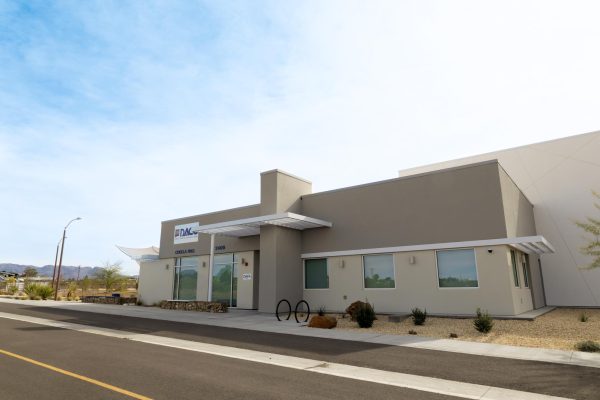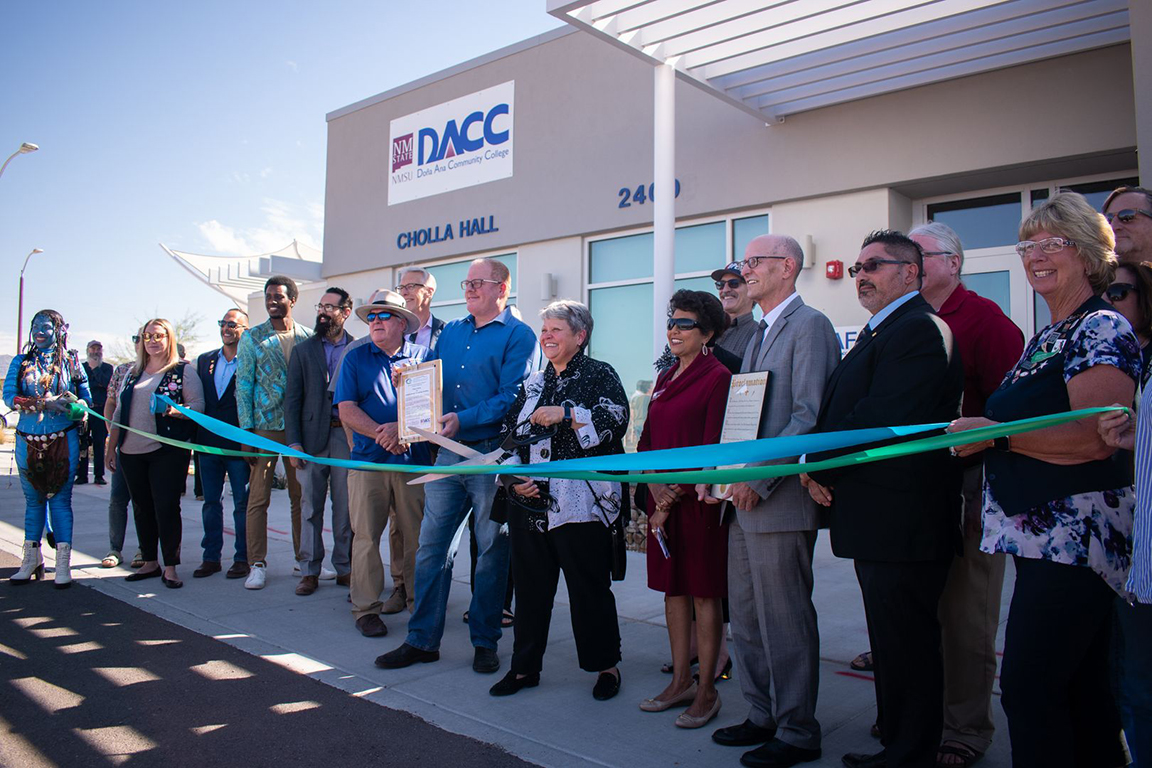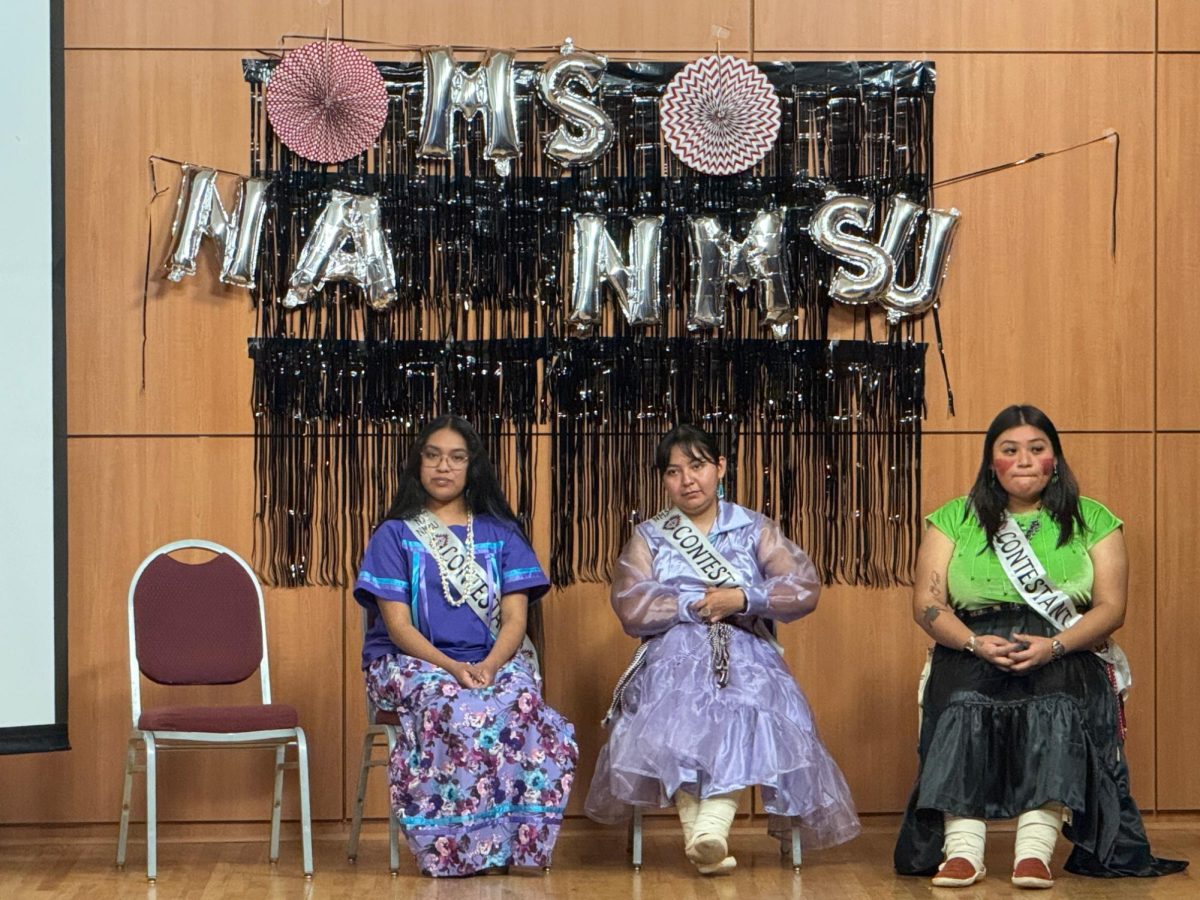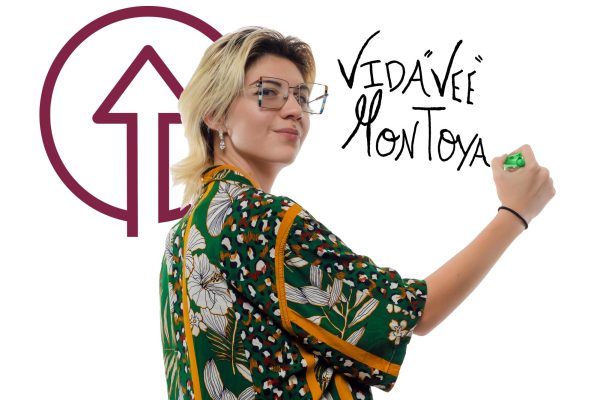Nearly a year and a half after construction began, Doña Ana Community College opened their new Creative Media Technology building on Arrowhead Drive on Friday Oct. 25, cutting the ribbon and opening the door to many futures in the New Mexico film industry.
Matt Burns is the department chair for the Arts Department at DACC, representing the film and technology program (C.M.T.). He said the program initially started in 2000 under the previous department chair, Rebecca Kong. Burns started his career in 2009 when the program was still at the East Mesa Campus. The C.M.T. program initially opened at the Arrowhead Center on Aug. 22.
“We didn’t want to do our grand opening right away, mainly because with a new building there’s all kinds of quirks and technology and glitchy things happening, especially with all the different bits and pieces that we have,” Burns said. “There’s a lot of moving parts in this building.”
C.M.T offers three degrees and nine certificates, including associate’s degrees in digital graphics, game design, and animation. The certificate programs offered are film crew training, commercial photography, digital audio production, and graphics in animation.
“[We offer] a variety of things, some of them stackable, some of them stand on,” Burns mentioned. “What this facility provides us is the opportunity to expand upon what we were doing up at the East Mesa Campus that we didn’t really have room to do [before].”
Burns described the various skills that can be learned in C.M.T. that other film schools or the industry itself often don’t prepare students for, many of which are important to their future careers.

“They [other schools] teach you how to use a camera or how to edit, how to do all those things,” Burns said. “Often, they don’t teach you about business, how to survive, how to read a contract, how to negotiate a contract, how to be an independent contractor, how do your taxes and figure out how to start a business and handle your own intellectual property and things like that. So that is what will also start happening while we’re here, is that it will expand upon that and start teaching entrepreneurship.”
Emmanuel Medina is a graduate student who has earned several degrees at New Mexico State University’s Creative Media Institute. Medina works at the Virtual Learning and Instructional Technology unit at DACC, where he helps students use Canvas and Office 365, as well as being a part of an online quality assurance team where courses are reviewed to be “up to par”.
“I met everyone as a student and just fell in love with the culture, with everything that they were doing here — the professors, how they were teaching; they were like mentors to me, and I just kind of liked the environment,” he said.
Medina had some advice for students who are considering a career in animation, including exploring “everything”, persevering and never giving up, and importantly, listening — not only to yourself, but to “the ones that want to help you”, as well as those who are telling you things you don’t want to hear, which can be “a reason to go even harder.”
Jesse Haas, Associate Vice President of Student Engagement at DACC, helps manage student life, including overseeing the Student Government Association, Tutoring Center, and the Health & Wellness Center. Haas remarked on the positive impact DACC has on students.
“So that’s the great thing about my position,” Haas said. “I get to interact with students daily, whether that be Student Government Association or just other students. And then I was heavily involved in several other departments prior, before getting this position. And so, I have a lot of rapport with current students, and they just love it. They find it amazing … I think this [facility] is going to be a game changer for our students.”

Jennifer Hodges, the Associate Vice President of Institutional Effectiveness at DACC, ensures that the college is maintaining its accreditation, which allows them to apply for federal grants and offer financial aid to students.
“I was actually surprised at how quickly the college was able to get that done,” Hodges said. “… I think from the point of concept to completion, [this] has gone more quickly than I’ve seen — you know, other projects get stood up … in the NMSU system or across the state. And I think there’s a large piece of it that had to do with the compelling argument.”
Hodges continued, elaborating on the competitiveness across the state to grow the film industry. She also credited the work of many people who helped with the project’s success, from dedicated faculty and staff, to the support of facilities, business and finance areas, as well as community and industry partners.
“There was a bit of competition between the northern part of New Mexico and the southern part of New Mexico in terms of the statewide efforts to build a film industry in the state,” Hodges explained. “The fact that we we’re able to kind of raise our hand and kind of say, ‘we got something fabulous going on in the southern part of the state!’ and making that argument in such a way that we got the ball rolling so quickly [contributed to the success].”
Burns went on to state his hopes for the future of the new CMT facility.
“This is just the beginning of what we’re calling the creative campus,” he said. “… it’ll be an entire creative complex on this entrepreneurial park that will hopefully spur more business, more economic development with media intellectual property … [It will allow students to] connect with those researchers, Ags [Aggies], those scientists, those engineers — with all the creative folks that will help them with their stories.”









